The second stage of product development is already focused on detailed modeling – class A modeling for further shape improvement, technical modeling for the development of construction sections, 3D sketching for a significant design change.
An integral part of shaping are strength, stiffness, modal and other analyzes.
Click on thumbnails to open the detailed description.
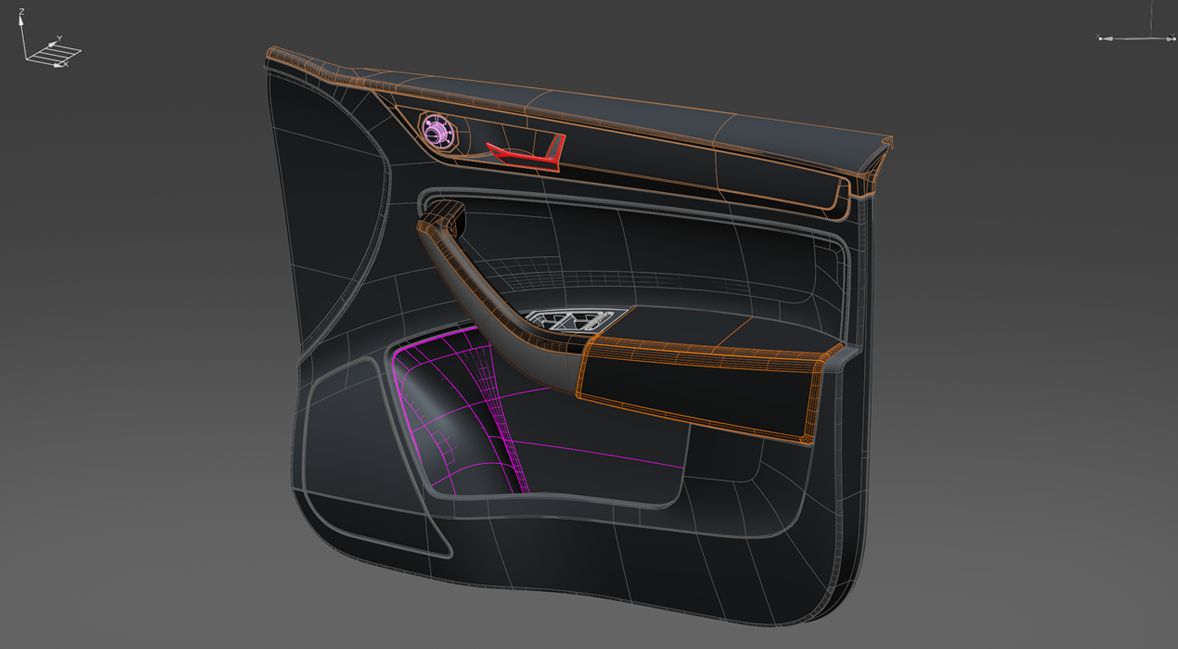
Class A modeling is the highest possible surface quality in freeform 3-Dimensional design modelling (of the model), which respects all design and production requirements. The 3-D model is continuously checked in terms of surface connectivity, curvature or flat areas, shape cleanliness, safety analysis, functionality, and feasibility by predetermined production technology. The output is a 3-D design freezed surface model that is released for further processes with no additional shape modifications. We do this in ICEM Surf software.
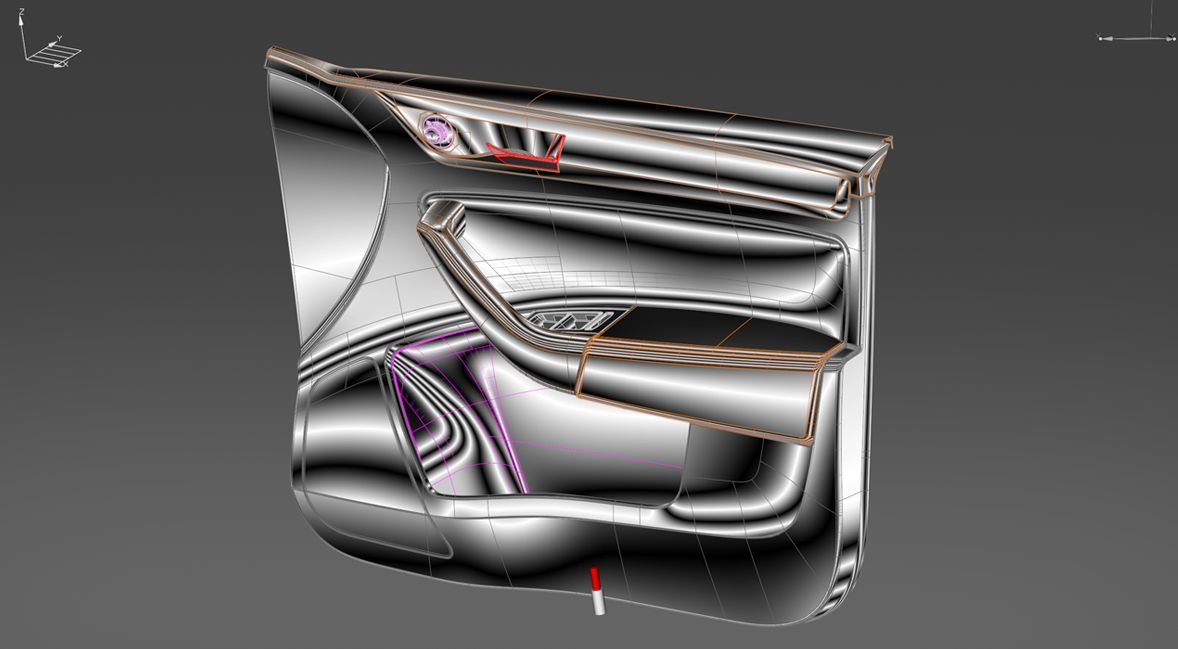
In the Class A modeling, the highlights function is used to check the surface shape cleanliness, especially in problematic curvature transition areas from small to large, horizontal to vertical and positive to negative.
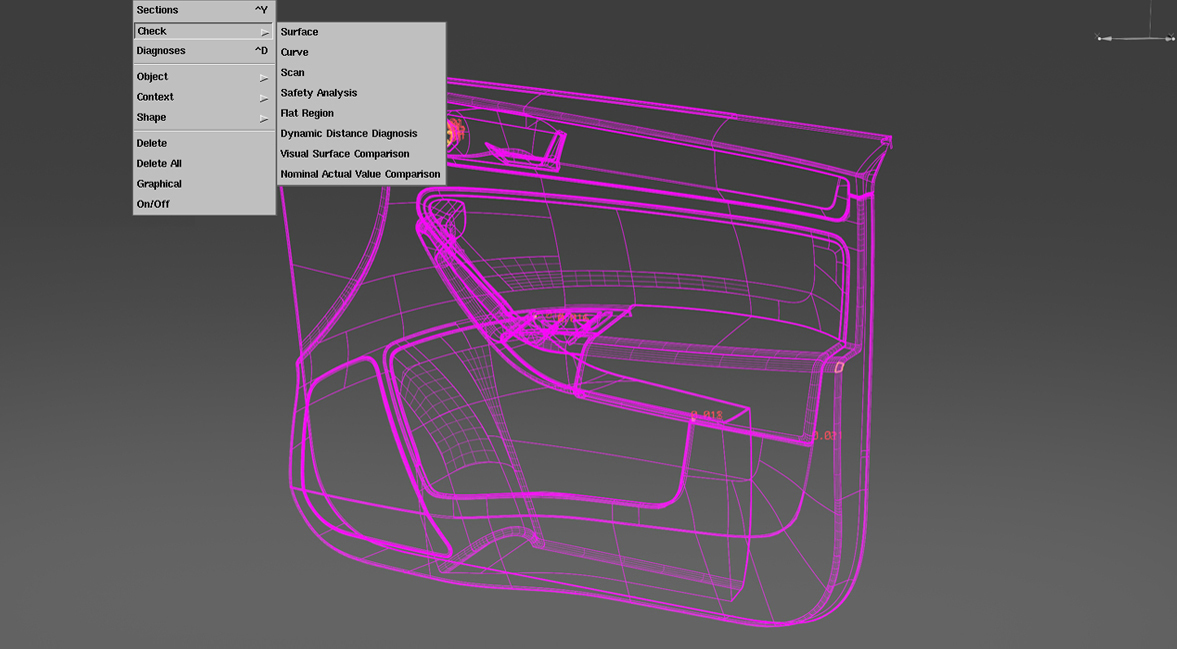
Surfaces are analysed for connectivity, radius sizes, duplications, demoulding, impact safety, etc.
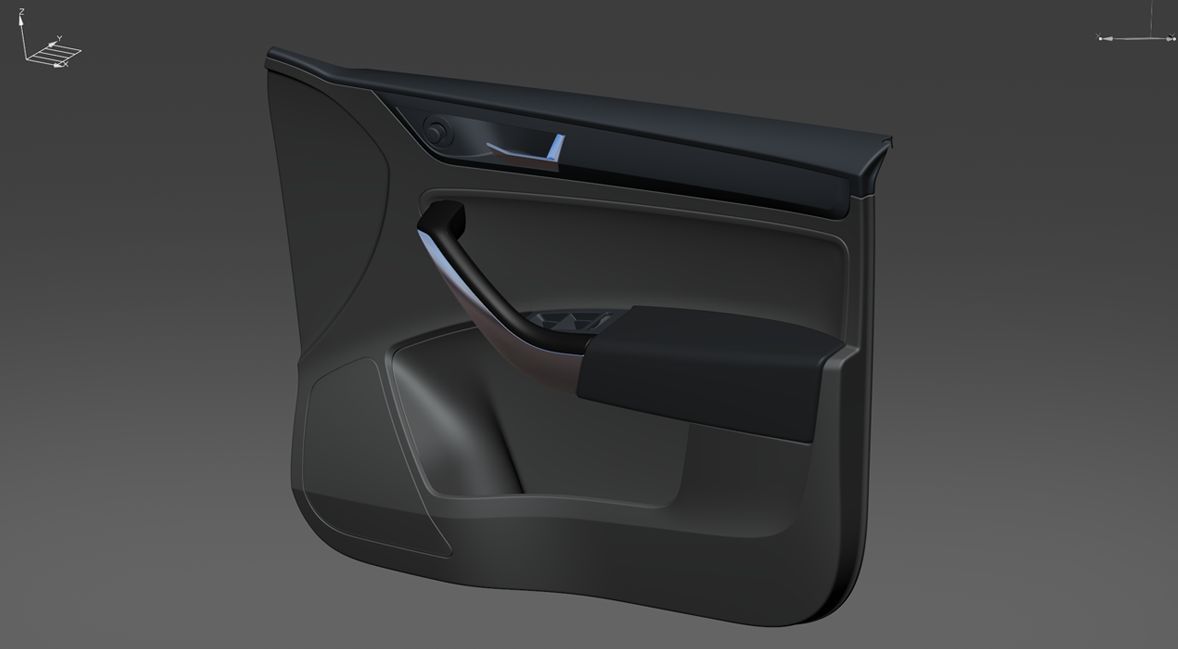
ICEM Surf is primarily focused on Class A modeling, where visualisation is not aimed at hi-end rendering but rather to detect shape imperfections.
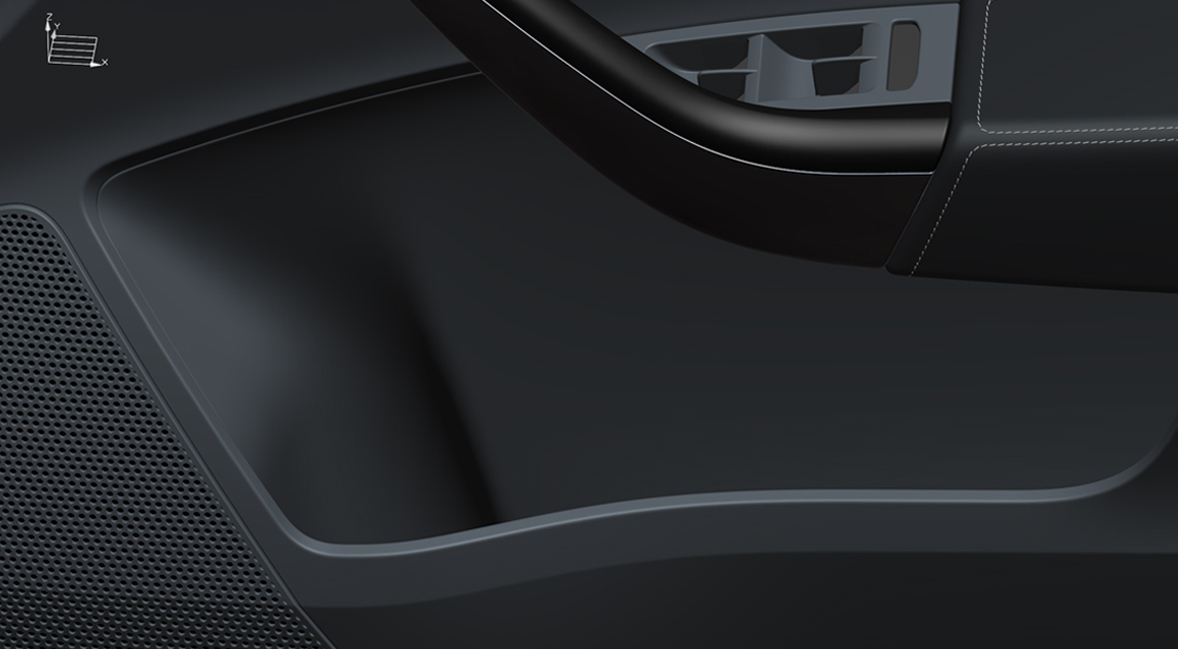
When preparing for VR presentations, we equip the model with all the details, including seams.

From the beginning, the mechanism has been developed as an aesthetic unit, part sizing and optimization of the function is carried out in close cooperation of the artist, designer and engineer analyst.
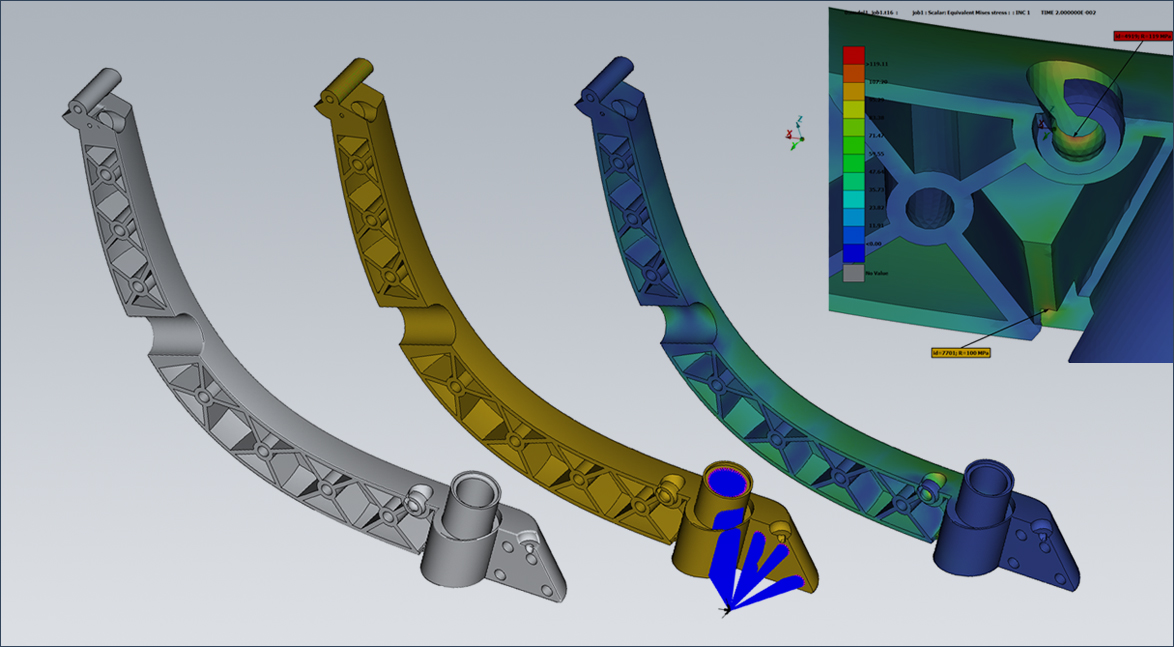
All stages of development include numerical simulations, strength analysis (part sizing, optimization of shape, stiffness), vibration and modal analysis (prevention of resonance states) - FEM finite element method. When designing mechanisms, simulations can determine forces acting on individual members, analyze the effect of passive resistance, control forces and so on - multi-body MBS simulation.
FEM and MBS simulations are an integral part of development.
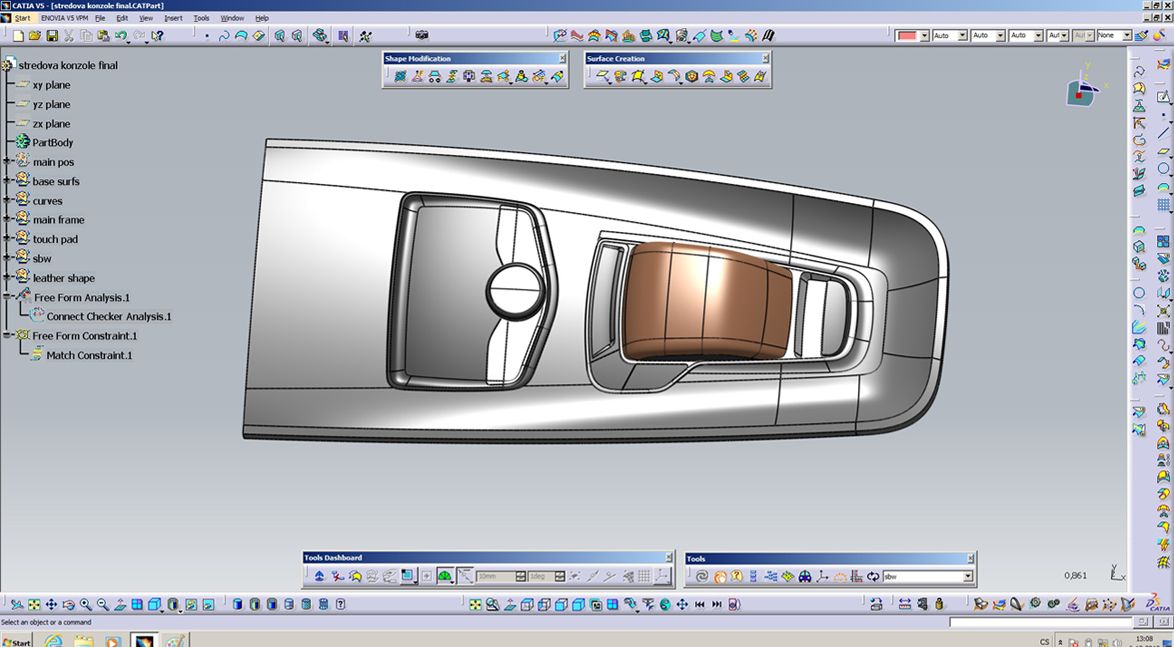
Technical modelling is lower grade in terms of surface quality but takes advantage of parameterization primarily for the speed of shape modification. It is also linked with design drawings or analysis - kinematic, strength, mass, aerodynamic etc.
In the Catia ISX module, we can achieve quality, approaching class A, without losing the advantages of the parameterization.
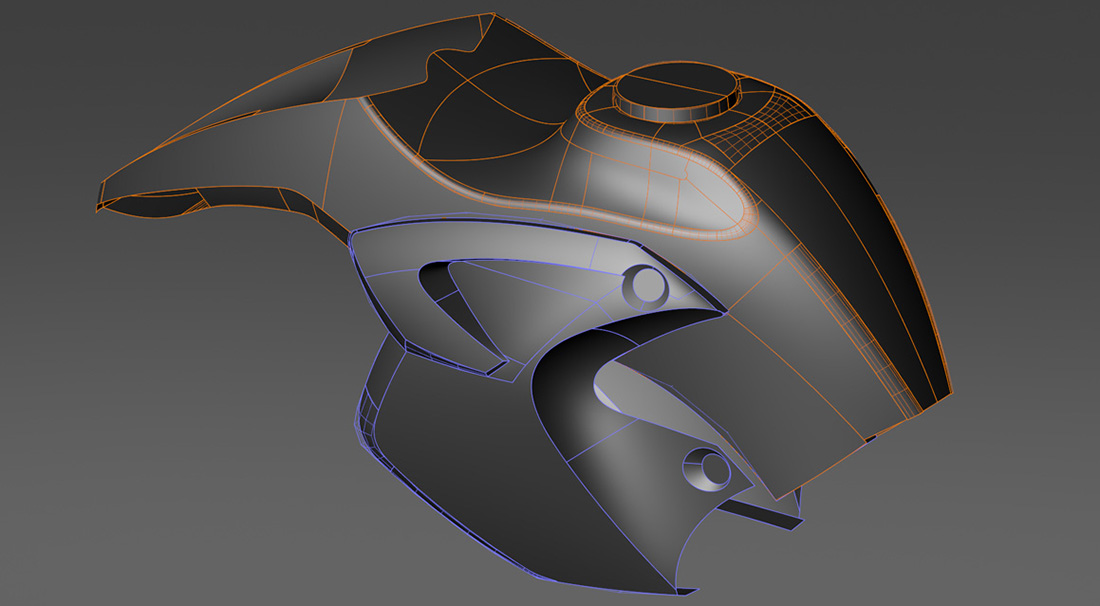
So-called 3D sketching usually refers to a fast modeling with no emphasis on high surface quality but on correct proportions and quick shape modification. It does not deal with detailed drawings. We use Autodesk Alias, ICEM Surf and Rhino softwares.
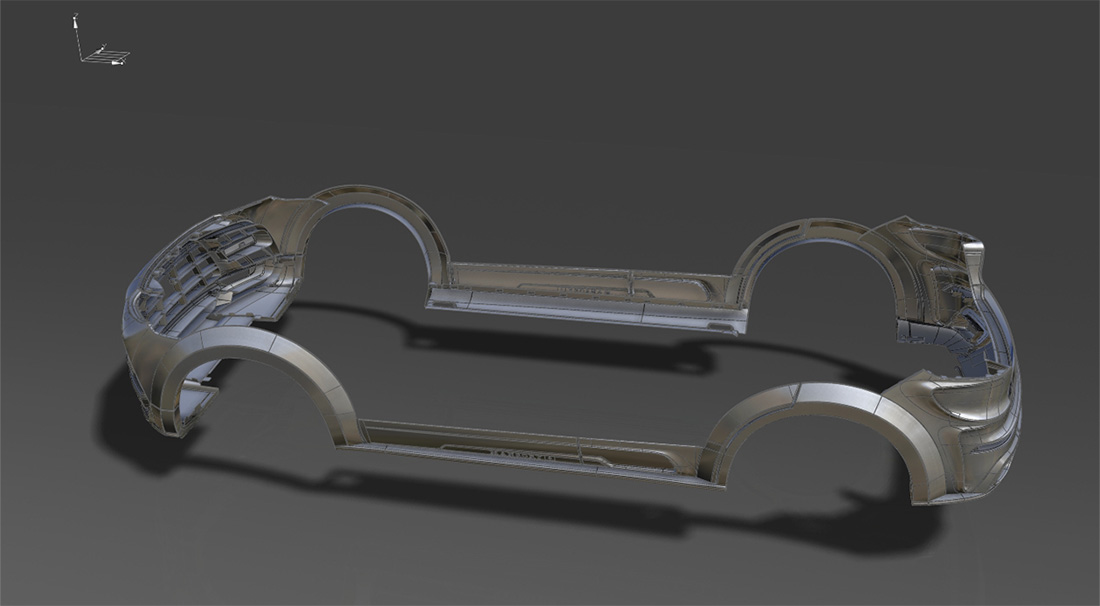
In some cases, when the model goes through manual finishing after milling or 3D printing, the sketching quality is sufficient to create the final digital models. In comparison with class A quality, the time and cost savings are significant.